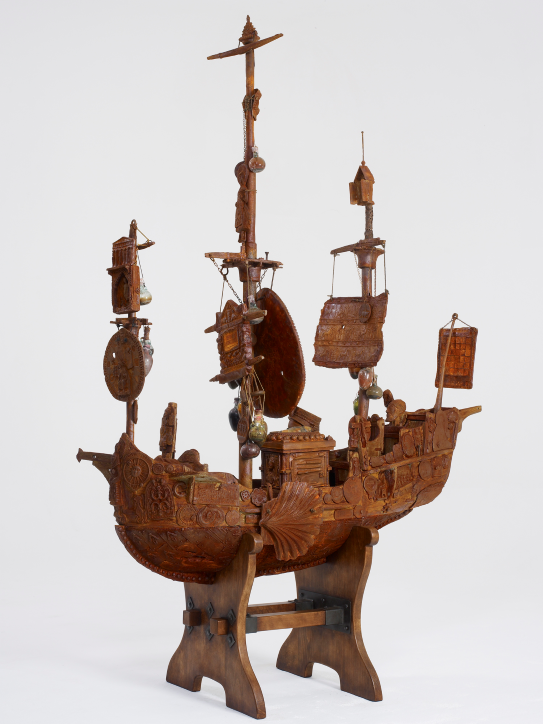Tomb of the unknown Craftsman
Grayson Perry
Transcription
History and tradition – Tomb of the Unknown Craftsman
This piece, tomb of the Unknown Craftsman, was the kind of key artwork from an exhibition I made for the British Museum in London.
It's a ship. It's about 2 metres long and three metres high, and it's made of pretty much all of it of cast iron. And I chose cast iron.
Because it's a material, it's not bronze. It has a more kind of workmanlike history. It's to do with Industry. It's supposedly like a coffin. It holds an anonymous individual who represents all of the people who made all of the monuments and artefacts of history that often you see in a place like the British Museum, but we have no name attached to them.
Because if you go to a contemporary Art Museum, every scrap of paper has a name attached to it. You know an individual who made this because they're an artist.
And yet you go to the British Museum and we know very few of the people who actually made the objects that we saw, and so I wanted to kind of make a celebration of them in the same way as the tomb of the Unknown Soldier.
In many countries they have a tomb of the Unknown soldier who represents all the soldiers that have fallen in battle for that country, and so it was a kind of honouring of craftsmanship
On the tomb you'll see hanging maybe 150 glass little pots, little vases, little bottles, and they sort of represent the sort of blood, sweat and tears really of the Craftsman and of the pilgrims. And that idea that you know we make offerings and often significant objects throughout different cultures throughout history have been what they call lie baited, they would pour things onto them so that that idea of sort of bringing a bit of the body into it almost and so.
I like the idea that it looks like it has a history. This thing if if one thing I am good at as an artist, it's faking authenticity.